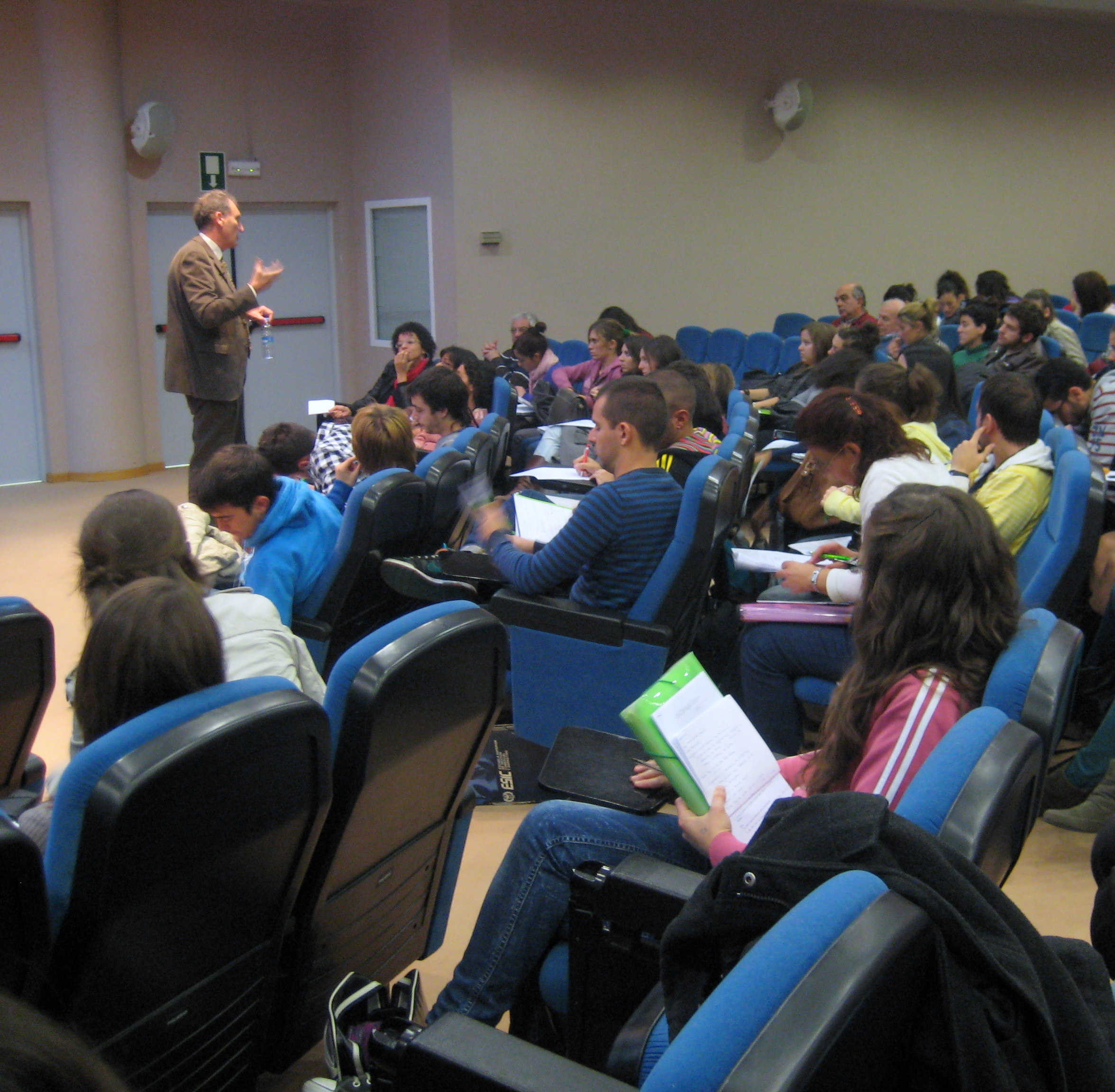Seville, November 15, 2010. More than a hundred students from the Faculty of Communication of Seville today attended the opening ceremony of the Week of Science and Technology at the Center for Scientific Research Isla de la Cartuja (cicCartuja). In an assembly hall where both journalism students and researchers from the Center were mixed, Professor Manuel Lozano Leyva became the protagonist of the event when he gave an entertaining speech on what, in his opinion, he considers the “Ten discoveries that changed the vision of the world”. During his presentation, the Professor of Atomic, Molecular and Nuclear Physics at the University of Seville described some of the most influential scientific discoveries in the history of mankind. Beginning with the discovery of the macrocosm and the importance of galaxies as “basic pillars of the Universe”, Manuel Lozano descended on an imaginary terrestrial scale to address the theory of plate tectonics, the origin of species and their evolution by natural selection or the circulation of blood. According to Lozano Leyva, these discoveries, produced in different periods of history, led to the advancement of astronomy, geology, biology and medicine, respectively.
In a lesser order and entering a different field of knowledge, Manuel Lozano explained the relevance of the discovery of the Rosetta Stone for the progress of philology and history, since it allowed the discovery of one of the most enigmatic civilizations of mankind, such as the Egyptian. On the scale of micrometers, the speaker chose the discovery of microorganisms by the Dutchman Anton von Leeuwenhock as a model for identifying bacteria and, in turn, for understanding the causes of numerous diseases. Even closer in the spatial sphere, Lozano Leyva referred to the development of genetics, and, finally, he delved into the research of atoms, the symmetry of the microcosm in the subnuclear world and, finally, the infinitesimal category; these last fields he masters to perfection, since his career as a scientist has been closely linked to nuclear physics, particle physics or quantum field theory. In fact, Manuel Lozano Leyva has had an extensive career not only as a lecturer at the University of Seville, but also as a research collaborator at the European Center for Nuclear Research (CERN), among other institutions.
The final part of the event was open to dialogue with the students, who were able to ask different questions on the theme of the conference and on the relationship between the media and science. The students, on the other hand, received the second edition of the CicCartuja Science Dissemination Notebooks, a publication that contains the contents of all the talks that will be held at this Center until November 18.
The opening ceremony was presided over by Miguel Ángel de la Rosa (Director of cicCartuja), Mª Dolores Vega (Manager of cicCartuja) and Adela Muñoz Páez (Professor at the University of Seville), who thanked Manuel Lozano Leyva for his presence on this day dedicated to disseminating and promoting science among young people.




